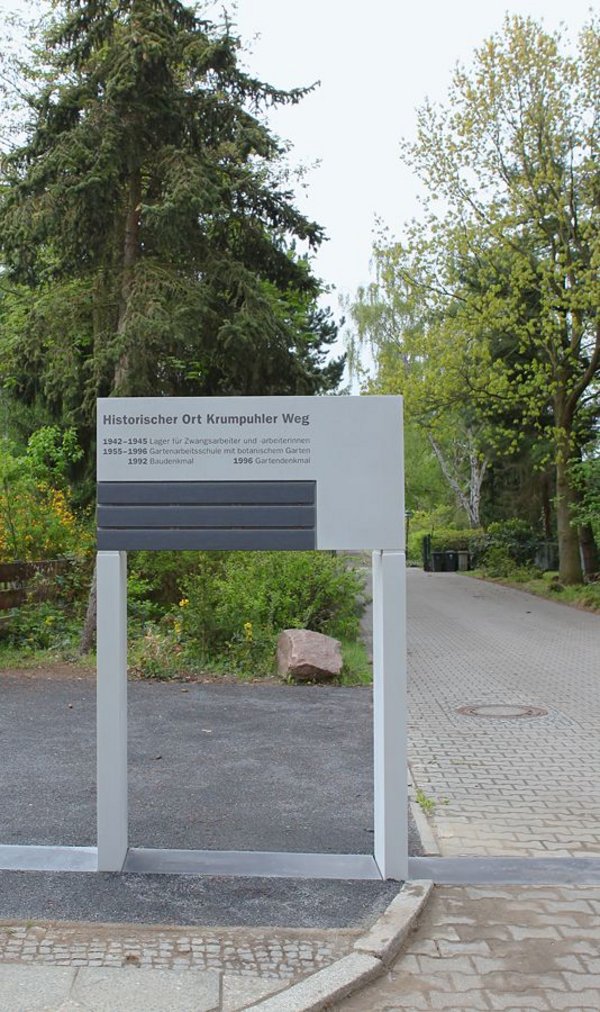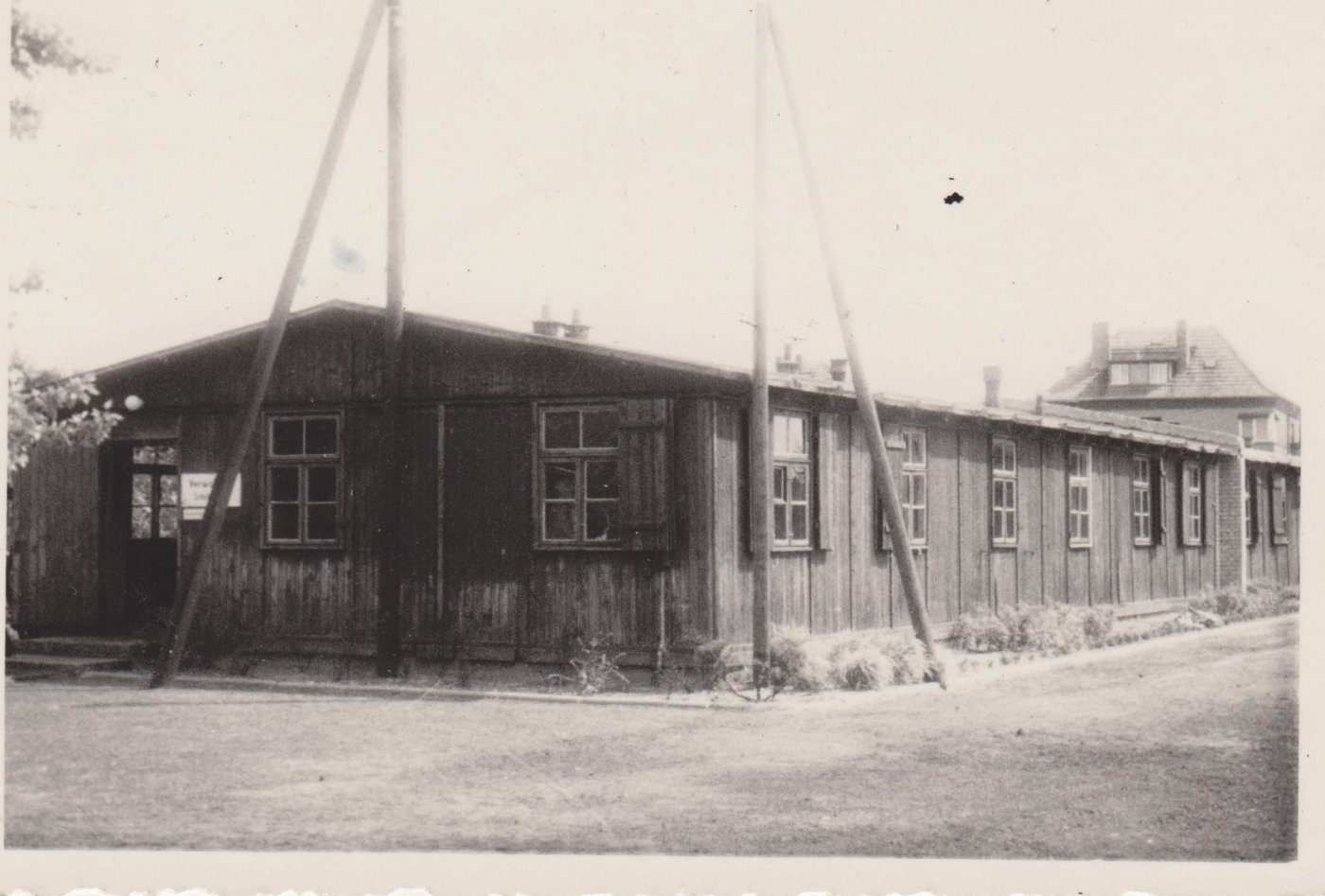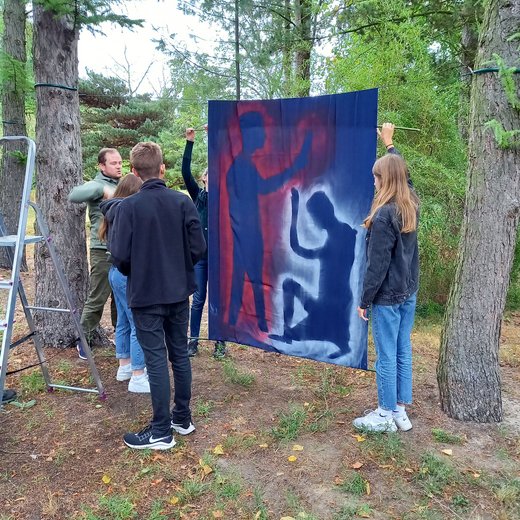
Historic Site Krumpuhler Weg
The site at Billerbecker Weg 123 in Berlin-Tegel was used as a forced labour camp between 1942 and 1945.
The Krumpuhler Weg forced labour camp had a capacity of 1,500, making it one of the largest in Berlin. It housed Ostarbeiter (Soviet forced labourers) and, from 1943, French forced labourers and Italian military internees. The camp was run by the armaments companies Alkett (Altmärkische Kettenwerke) and Maget (Maschinen- und Gerätebau Tegel), both subsidiaries of Rheinmetall-Borsig, one of the largest German arms manufacturers. According to a 1944 plan, 38 buildings were erected on the site, including wooden residential and supply barracks, solid stone barracks, guard and supply barracks, workshops and splinter protection trenches, as well as a delousing station and a pigsty. The main entrance with a porter’s lodge was on Billerbecker Weg, with another porter’s lodge on Werdohler Weg, at the corner of Dattelner Weg. Unusually for camps in Berlin, the history of this forced labour camp is almost completely documented.
The remaining buildings were used in the post-war period as a school and, in 1950, as a home for “problem girls”. In 1955, the site was converted into a school of landscape gardening with an arboretum. Traces of all these historical layers can still be seen today. In the 1990s, both the gardening school and the barracks were listed separately as protected monuments.
The Krumpuhler Weg Historical Site was created in 2010 by the Berlin district of Reinickendorf. In order to make the site visible in its entirety, all of its historical layers have been displayed in a Denkwerk (“think works”), represented by ten artistically and thematically designed concrete benches. Some of the benches invite visitors to sit down and linger in the idyllic garden memorial, while others are overturned and cannot be used as benches, but instead display information about the place, its inhabitants and the conditions in the Krumpuhler Weg forced labour camp along the former camp road.
In 2016, the Reinickendorf Museum set up a memorial and information room in one of the barrack buildings, a former stable on the western side of the site, which has been preserved almost in its original state. In addition to a timeline of the site’s history, the exhibition is devoted exclusively to documenting the years of forced labour. It is based on artefacts unearthed during preparatory work on a part of the site that had previously been sold. Many of the camp’s utensils were found in the excavated splinter protection trench and are now displayed in showcases. Photographs, documents and plans discovered during the research are also on display. The room is now a place of information and remembrance and can be used by groups as a history laboratory, for workshops and project weeks. The public can also visit the museum on guided tours or at events.


Address
Opening Hours
The grounds of the Historical Site Krumpuhler Weg are open to the public Monday to Friday from 9am to 4pm.
The museum on the site can be visited by prior arrangement as part of school projects and guided tours.


